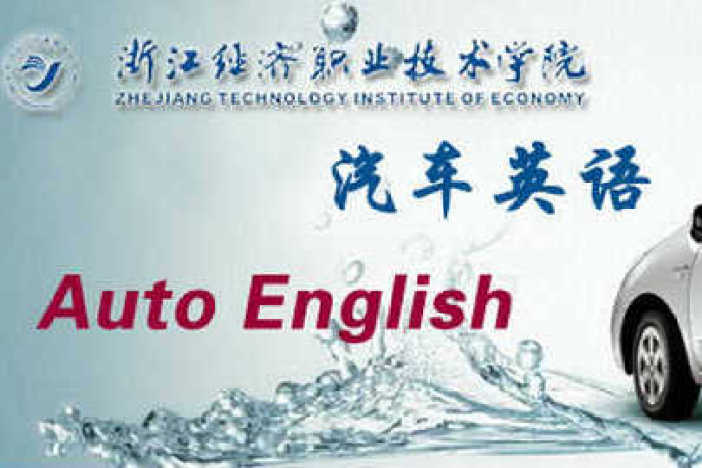收藏
课程目录
1.1 What Is Critical Thinking? (I
 1.2 What Is Critical Thinking? (II
1.2 What Is Critical Thinking? (II
 1.3 What Is Critical Writing?
1.3 What Is Critical Writing?
 1.4.1 What Is the Connection Between Critical Thinking and Critical Writing? (I
1.4.1 What Is the Connection Between Critical Thinking and Critical Writing? (I
 1.4.2 What Is the Connection Between Critical Thinking and Critical Writing? (II
1.4.2 What Is the Connection Between Critical Thinking and Critical Writing? (II
 1.5 Lesson Review
1.5 Lesson Review
 Language Workshop: Word Choice
Language Workshop: Word Choice
 2.1 What Is an Argument? (I
2.1 What Is an Argument? (I
 2.2 What Is an Argument? (II
2.2 What Is an Argument? (II
 2.3 What is the Structure of Critical Essays? (An Overview
2.3 What is the Structure of Critical Essays? (An Overview
 2.4 What is the Structure of Critical Essays? (The Introduction Section
2.4 What is the Structure of Critical Essays? (The Introduction Section
 2.5 What is the Structure of Critical Essays? (The Body Section
2.5 What is the Structure of Critical Essays? (The Body Section
 2.6 What is the Structure of Critical Essays? (The Conclusion
2.6 What is the Structure of Critical Essays? (The Conclusion
 2.7 Lesson Review
2.7 Lesson Review
 Language Workshop: Effective Use of Verbs
Language Workshop: Effective Use of Verbs
 Lesson 3 Overview
Lesson 3 Overview
 3.1 What Is a Thesis?
3.1 What Is a Thesis?
 3.2 Types of Theses
3.2 Types of Theses
 3.3 What Makes a Thesis Statement? (I
3.3 What Makes a Thesis Statement? (I
 3.4 What Makes a Thesis Statement? (II
3.4 What Makes a Thesis Statement? (II
 3.5.1 What Makes a Thesis Statement? (III
3.5.1 What Makes a Thesis Statement? (III
 3.5.2 What Makes a Thesis Statement? (III
3.5.2 What Makes a Thesis Statement? (III
 3.6.1 Writing Introductions (I
3.6.1 Writing Introductions (I
 3.6.2 Writing Introductions (I
3.6.2 Writing Introductions (I
 3.6.3 Writing Introductions (I
3.6.3 Writing Introductions (I
 3.7 Writing Introductions (II
3.7 Writing Introductions (II
 3.8 Lesson Review
3.8 Lesson Review
 Language Workshop: Periodic vs Loose Sentences
Language Workshop: Periodic vs Loose Sentences
 Lesson 4 Overview
Lesson 4 Overview
 4.1 What Is Reasoning?
4.1 What Is Reasoning?
 4.2 All about Reasons
4.2 All about Reasons
 4.3 Oh! Evidence (I
4.3 Oh! Evidence (I
 4.4 Oh! Evidence (II
4.4 Oh! Evidence (II
 4.5 Reasoning vs Explaining
4.5 Reasoning vs Explaining
 4.6 Going into Explanations
4.6 Going into Explanations
 4.7 Patterns of Reasoning
4.7 Patterns of Reasoning
 4.8 Paragraph Writing—Unity
4.8 Paragraph Writing—Unity
 4.9 Paragraph Writing—Reasoning
4.9 Paragraph Writing—Reasoning
 4.10 Paragraph Writing—Coherence
4.10 Paragraph Writing—Coherence
 4.11 Lesson Review
4.11 Lesson Review
 Language Workshop: Use Concrete and Specific Language
Language Workshop: Use Concrete and Specific Language
 Lesson 5 Overview
Lesson 5 Overview
 5.1 Deductive Arguments
5.1 Deductive Arguments
 5.2 Inductive Arguments
5.2 Inductive Arguments
 5.3 Deductive Arguments vs Inductive Arguments
5.3 Deductive Arguments vs Inductive Arguments
 5.4 Deductive Arguments in Writing—Reason by Principle (I
5.4 Deductive Arguments in Writing—Reason by Principle (I
 5.5 Deductive Arguments in Writing—Reason by Principle (II
5.5 Deductive Arguments in Writing—Reason by Principle (II
 5.6 Deductive Arguments in Writing—Reason by Definition (I
5.6 Deductive Arguments in Writing—Reason by Definition (I
 5.7 Deductive Arguments in Writing—Reason by Definition (II
5.7 Deductive Arguments in Writing—Reason by Definition (II
 5.8 Lesson Review
5.8 Lesson Review
 Language Workshop: Parallel Structure
Language Workshop: Parallel Structure
 Lesson 6 Overview
Lesson 6 Overview
 6.1 Making Generalizations (I
6.1 Making Generalizations (I
 6.2 Making Generalizations (II
6.2 Making Generalizations (II
 6.3 Reasoning by Analogy (I
6.3 Reasoning by Analogy (I
 6.4 Reasoning by Analogy (II
6.4 Reasoning by Analogy (II
 6.5 Reasoning by Cause and Effect (I
6.5 Reasoning by Cause and Effect (I
 6.6 Reasoning by Cause and Effect (II
6.6 Reasoning by Cause and Effect (II
 6.7 Lesson Review—Employing Various Reasoning Techniques
6.7 Lesson Review—Employing Various Reasoning Techniques
 Language Workshop: Run-Ons and Commas
Language Workshop: Run-Ons and Commas
 Lesson 7 Overview
Lesson 7 Overview
 7.1 Evaluating and Improving Arguments by Principle
7.1 Evaluating and Improving Arguments by Principle
 7.2 Evaluating and Improving Arguments by Definition
7.2 Evaluating and Improving Arguments by Definition
 7.3 Evaluating and Improving Generalizations (I
7.3 Evaluating and Improving Generalizations (I
 7.4 Evaluating and Improving Generalizations (II
7.4 Evaluating and Improving Generalizations (II
 7.5 Evaluating and Improving Generalizations (III
7.5 Evaluating and Improving Generalizations (III
 7.6 Evaluating and Improving Arguments by Analogy
7.6 Evaluating and Improving Arguments by Analogy
 7.7 Evaluating and Revising Causal Reasoning (I
7.7 Evaluating and Revising Causal Reasoning (I
 7.8 Evaluating and Improving Causal Reasoning (II
7.8 Evaluating and Improving Causal Reasoning (II
 7.9 Lesson Review
7.9 Lesson Review
 Language Workshop: Redundancies in English Sentences
Language Workshop: Redundancies in English Sentences
 Lesson 8 Overview
Lesson 8 Overview
 8.1 What Is a Counter-Argument?
8.1 What Is a Counter-Argument?
 8.2 Writing Counter-Arguments in Critical Essays (I
8.2 Writing Counter-Arguments in Critical Essays (I
 8.3 Writing Counter-Arguments in Critical Essays (II
8.3 Writing Counter-Arguments in Critical Essays (II
 8.4 How to Rebut Conflicting Arguments (I
8.4 How to Rebut Conflicting Arguments (I
 8.5 How to Rebut Conflicting Arguments (II
8.5 How to Rebut Conflicting Arguments (II
 8.6 Writing Essay Conclusions
8.6 Writing Essay Conclusions
 8.7 Lesson Review
8.7 Lesson Review
 Language Workshop: Capitalization
Language Workshop: Capitalization
 Language Workshop: Punctuation
Language Workshop: Punctuation

 1.2 What Is Critical Thinking? (II
1.2 What Is Critical Thinking? (II
 1.3 What Is Critical Writing?
1.3 What Is Critical Writing?
 1.4.1 What Is the Connection Between Critical Thinking and Critical Writing? (I
1.4.1 What Is the Connection Between Critical Thinking and Critical Writing? (I
 1.4.2 What Is the Connection Between Critical Thinking and Critical Writing? (II
1.4.2 What Is the Connection Between Critical Thinking and Critical Writing? (II
 1.5 Lesson Review
1.5 Lesson Review
 Language Workshop: Word Choice
Language Workshop: Word Choice
 2.1 What Is an Argument? (I
2.1 What Is an Argument? (I
 2.2 What Is an Argument? (II
2.2 What Is an Argument? (II
 2.3 What is the Structure of Critical Essays? (An Overview
2.3 What is the Structure of Critical Essays? (An Overview
 2.4 What is the Structure of Critical Essays? (The Introduction Section
2.4 What is the Structure of Critical Essays? (The Introduction Section
 2.5 What is the Structure of Critical Essays? (The Body Section
2.5 What is the Structure of Critical Essays? (The Body Section
 2.6 What is the Structure of Critical Essays? (The Conclusion
2.6 What is the Structure of Critical Essays? (The Conclusion
 2.7 Lesson Review
2.7 Lesson Review
 Language Workshop: Effective Use of Verbs
Language Workshop: Effective Use of Verbs
 Lesson 3 Overview
Lesson 3 Overview
 3.1 What Is a Thesis?
3.1 What Is a Thesis?
 3.2 Types of Theses
3.2 Types of Theses
 3.3 What Makes a Thesis Statement? (I
3.3 What Makes a Thesis Statement? (I
 3.4 What Makes a Thesis Statement? (II
3.4 What Makes a Thesis Statement? (II
 3.5.1 What Makes a Thesis Statement? (III
3.5.1 What Makes a Thesis Statement? (III
 3.5.2 What Makes a Thesis Statement? (III
3.5.2 What Makes a Thesis Statement? (III
 3.6.1 Writing Introductions (I
3.6.1 Writing Introductions (I
 3.6.2 Writing Introductions (I
3.6.2 Writing Introductions (I
 3.6.3 Writing Introductions (I
3.6.3 Writing Introductions (I
 3.7 Writing Introductions (II
3.7 Writing Introductions (II
 3.8 Lesson Review
3.8 Lesson Review
 Language Workshop: Periodic vs Loose Sentences
Language Workshop: Periodic vs Loose Sentences
 Lesson 4 Overview
Lesson 4 Overview
 4.1 What Is Reasoning?
4.1 What Is Reasoning?
 4.2 All about Reasons
4.2 All about Reasons
 4.3 Oh! Evidence (I
4.3 Oh! Evidence (I
 4.4 Oh! Evidence (II
4.4 Oh! Evidence (II
 4.5 Reasoning vs Explaining
4.5 Reasoning vs Explaining
 4.6 Going into Explanations
4.6 Going into Explanations
 4.7 Patterns of Reasoning
4.7 Patterns of Reasoning
 4.8 Paragraph Writing—Unity
4.8 Paragraph Writing—Unity
 4.9 Paragraph Writing—Reasoning
4.9 Paragraph Writing—Reasoning
 4.10 Paragraph Writing—Coherence
4.10 Paragraph Writing—Coherence
 4.11 Lesson Review
4.11 Lesson Review
 Language Workshop: Use Concrete and Specific Language
Language Workshop: Use Concrete and Specific Language
 Lesson 5 Overview
Lesson 5 Overview
 5.1 Deductive Arguments
5.1 Deductive Arguments
 5.2 Inductive Arguments
5.2 Inductive Arguments
 5.3 Deductive Arguments vs Inductive Arguments
5.3 Deductive Arguments vs Inductive Arguments
 5.4 Deductive Arguments in Writing—Reason by Principle (I
5.4 Deductive Arguments in Writing—Reason by Principle (I
 5.5 Deductive Arguments in Writing—Reason by Principle (II
5.5 Deductive Arguments in Writing—Reason by Principle (II
 5.6 Deductive Arguments in Writing—Reason by Definition (I
5.6 Deductive Arguments in Writing—Reason by Definition (I
 5.7 Deductive Arguments in Writing—Reason by Definition (II
5.7 Deductive Arguments in Writing—Reason by Definition (II
 5.8 Lesson Review
5.8 Lesson Review
 Language Workshop: Parallel Structure
Language Workshop: Parallel Structure
 Lesson 6 Overview
Lesson 6 Overview
 6.1 Making Generalizations (I
6.1 Making Generalizations (I
 6.2 Making Generalizations (II
6.2 Making Generalizations (II
 6.3 Reasoning by Analogy (I
6.3 Reasoning by Analogy (I
 6.4 Reasoning by Analogy (II
6.4 Reasoning by Analogy (II
 6.5 Reasoning by Cause and Effect (I
6.5 Reasoning by Cause and Effect (I
 6.6 Reasoning by Cause and Effect (II
6.6 Reasoning by Cause and Effect (II
 6.7 Lesson Review—Employing Various Reasoning Techniques
6.7 Lesson Review—Employing Various Reasoning Techniques
 Language Workshop: Run-Ons and Commas
Language Workshop: Run-Ons and Commas
 Lesson 7 Overview
Lesson 7 Overview
 7.1 Evaluating and Improving Arguments by Principle
7.1 Evaluating and Improving Arguments by Principle
 7.2 Evaluating and Improving Arguments by Definition
7.2 Evaluating and Improving Arguments by Definition
 7.3 Evaluating and Improving Generalizations (I
7.3 Evaluating and Improving Generalizations (I
 7.4 Evaluating and Improving Generalizations (II
7.4 Evaluating and Improving Generalizations (II
 7.5 Evaluating and Improving Generalizations (III
7.5 Evaluating and Improving Generalizations (III
 7.6 Evaluating and Improving Arguments by Analogy
7.6 Evaluating and Improving Arguments by Analogy
 7.7 Evaluating and Revising Causal Reasoning (I
7.7 Evaluating and Revising Causal Reasoning (I
 7.8 Evaluating and Improving Causal Reasoning (II
7.8 Evaluating and Improving Causal Reasoning (II
 7.9 Lesson Review
7.9 Lesson Review
 Language Workshop: Redundancies in English Sentences
Language Workshop: Redundancies in English Sentences
 Lesson 8 Overview
Lesson 8 Overview
 8.1 What Is a Counter-Argument?
8.1 What Is a Counter-Argument?
 8.2 Writing Counter-Arguments in Critical Essays (I
8.2 Writing Counter-Arguments in Critical Essays (I
 8.3 Writing Counter-Arguments in Critical Essays (II
8.3 Writing Counter-Arguments in Critical Essays (II
 8.4 How to Rebut Conflicting Arguments (I
8.4 How to Rebut Conflicting Arguments (I
 8.5 How to Rebut Conflicting Arguments (II
8.5 How to Rebut Conflicting Arguments (II
 8.6 Writing Essay Conclusions
8.6 Writing Essay Conclusions
 8.7 Lesson Review
8.7 Lesson Review
 Language Workshop: Capitalization
Language Workshop: Capitalization
 Language Workshop: Punctuation
Language Workshop: Punctuation

课程详情
本课程将思辨能力的培养与英语论说文写作教学有机结合,旨在进一步提高学生的英语运用能力,使学生能够在国际交往中用准确的书面语言表达观点、进行沟通,并能熟练运用英语来解决问题、分析问题。
本课程将思辨能力的培养与英语论说文写作教学有机结合,旨在进一步提高学生的英语运用能力,使学生能够在国际交往中用准确的书面语言表达观点、进行沟通,并能熟练运用英语来解决问题、分析问题。
本课程将思辨能力的培养与英语论说文写作教学有机结合,旨在进一步提高学生的英语运用能力,使学生能够在国际交往中用准确的书面语言表达观点、进行沟通,并能熟练运用英语来解决问题、分析问题。












